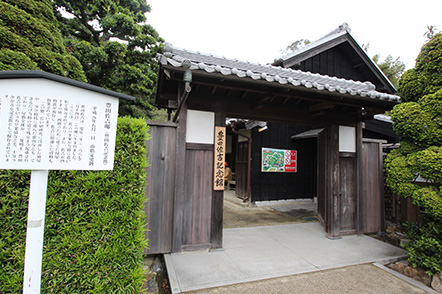

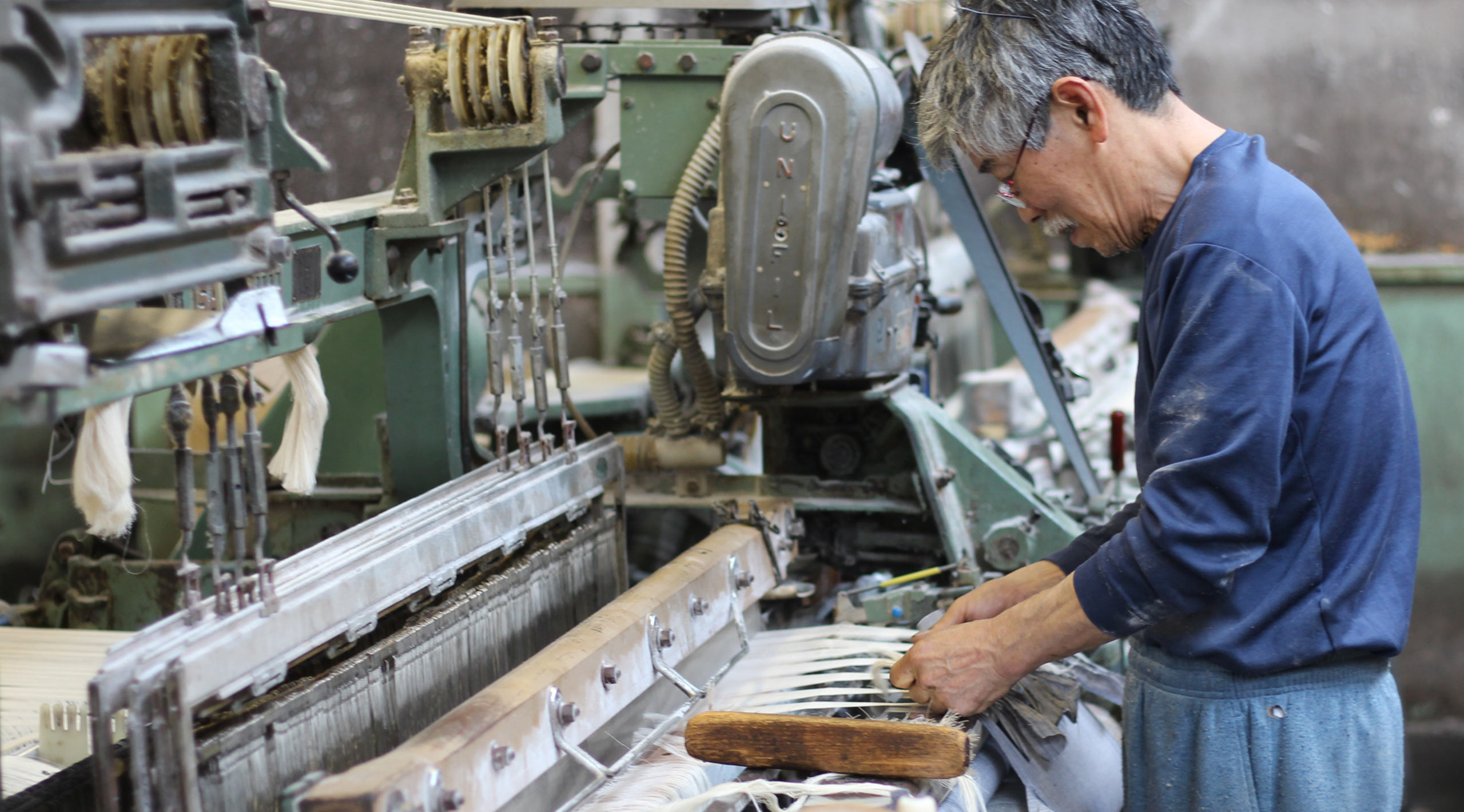
What is a shuttle loom?
The machine used to weave fabric is called a loom, and there are two types of looms: shuttle looms, which have a shuttle to pass the weft yarn, and shuttleless looms, which do not use a shuttle. Most of the fabrics produced in recent years are made on shuttleless looms, which are computer-controlled and use wind and water pressure to carry the weft yarn at high speed, resulting in extremely high production efficiency and a smooth, even surface finish. Shuttle looms, on the other hand, can weave at only one-tenth to one-twentieth the speed of shuttleless looms, and are extremely inefficient looms that require a lot of manual labor. However, by weaving slowly and carefully over a long period of time so as not to stress the warp and weft yarns, a fluffy, warm textured fabric with an uneven surface is produced. The high density of the weave also makes it extremely durable, and clothes made from fabric woven on shuttle looms can be used for a long time.
This texture is the source of clothes that fit gently to the body and can be loved for a long time. All HUIS clothes are made from fabrics produced on shuttle looms, and the more you use them, the more you will grow accustomed to their natural texture.
(Photography cooperation: Furuhashi Orimono)
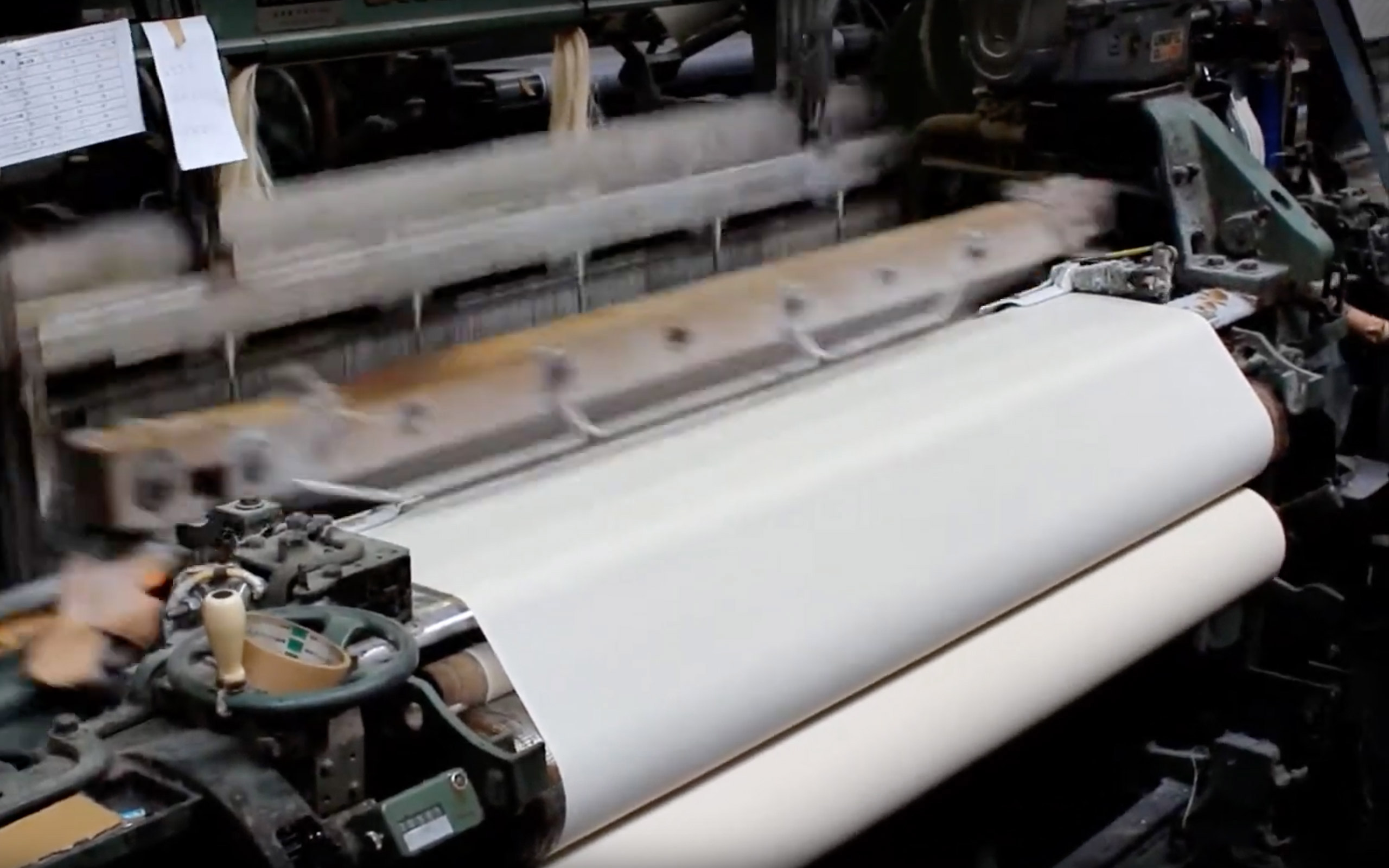
Once the warp beams are brought in, the “warp threading” process begins.
The process for weaving fabric begins with a process called hetooshi (warp threading), in which the warp threads are wound onto a beam and then placed on a loom. Normally, each thread is threaded by hand by experienced weavers over a period of two to three days. When weaving fabrics that have been woven before, the threads are sometimes tied by a machine called a “tying machine” because there are still some “seeds” left.
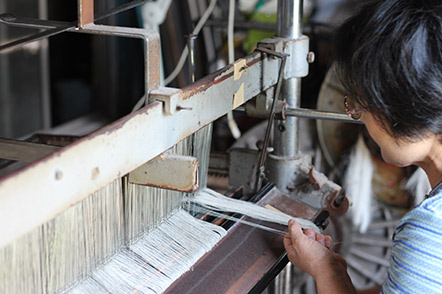
Weaving and attaching” work following the warp threading process
Next, the warp threads are threaded through the weaving machine, and the weaving craftsman performs the “weaving attachment” process. Because the mechanism of the shuttle loom is entirely a manual mechanical device, the weaver adjusts all the fine parts here by hand. Fine adjustments are made according to the yarn count and texture to be used, preparing the fabric for weaving in the most suitable condition.
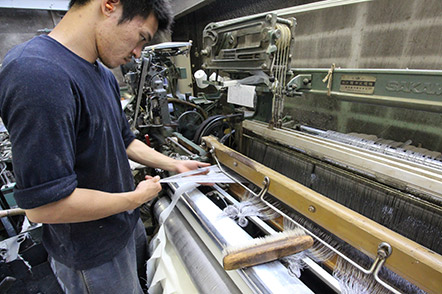
Shuttle to carry the weft
The shuttle plays the role of passing the weft yarns back and forth between the installed warp yarns. As shown in the image, a "mokkan" (wooden tube) wound with weft yarn is inserted inside the shuttle and installed on the loom. When the loom is in operation, the shuttle is pushed out from one end by a device called a picker, is received by the picker on the opposite end, and is immediately pushed out again. The shuttle itself is extremely durable because it reciprocates approximately 75 times per minute.
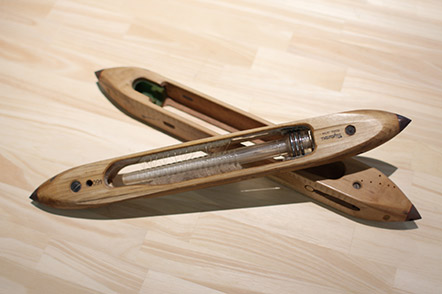
A shuttle with a weft yarn on it moves back and forth to weave the fabric.
After the warp and weft (shuttle) yarns are adjusted, the shuttle loom is finally put into operation. The shuttle with the weft yarns on it weaves back and forth over and over again through the gaps that are opened so as not to put a burden on the yarns, and a dense, fluffy textured fabric is woven.
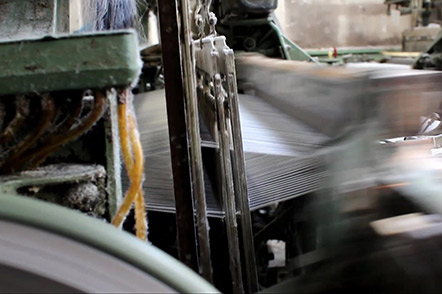
Mokkan (wooden pipe)” lined up in order
Several “wooden tubes” installed in the center of the image. When the shuttle runs out of thread, the “wooden tubes” are automatically ejected, and a replacement is immediately set in place to continue threading the weft. The bottommost “wooden tube” is waiting for the next shuttle.
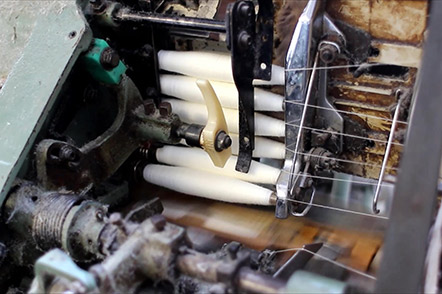
Raw machines that have been inspected are sent to a plant where they are arranged and processed.
Once checked, the raw fabric is slowly and carefully folded. Generally, after this process, the fabric is shipped to a specific processing factory for further processing.
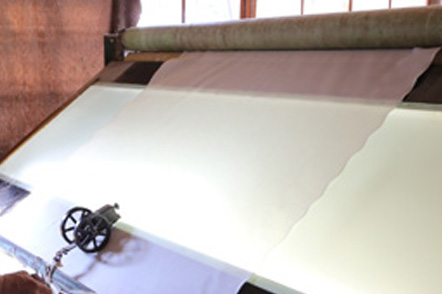
Shuttle loom originated in Enshu by Sakichi Toyoda
Sakichi Toyoda, the founder of the Toyota Group, was born in Kosai City in the Enshu region, where he invented the shuttle-changing automatic loom (shuttle loom), which revolutionized the textile industry in Japan. The principles of this automatic loom were later used to develop automobiles, leading to today's Toyota Motor Corporation. The shuttle loom is the origin of Japan's proud technological prowess, and Enshu is its birthplace.
